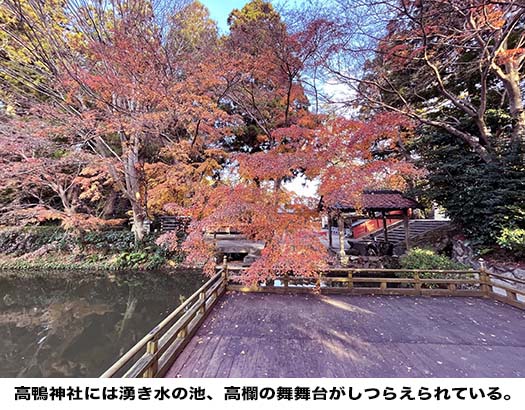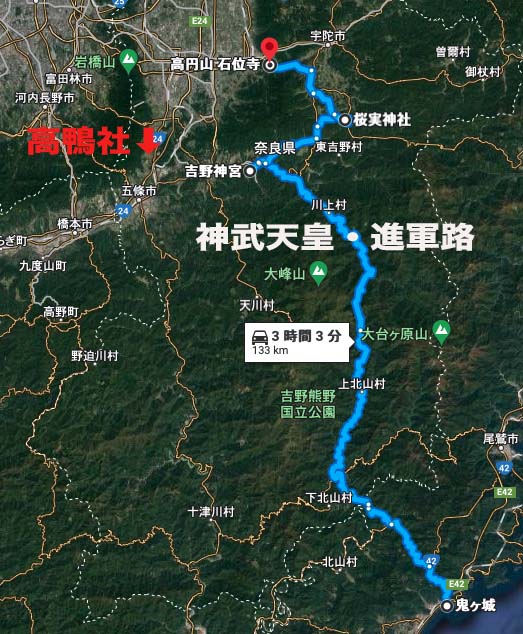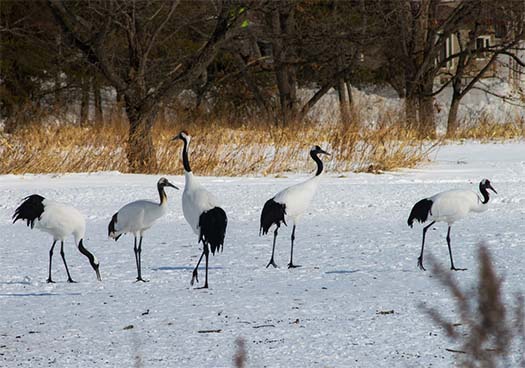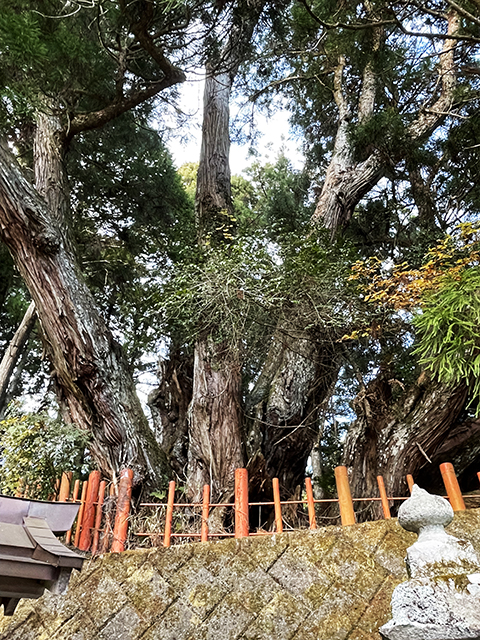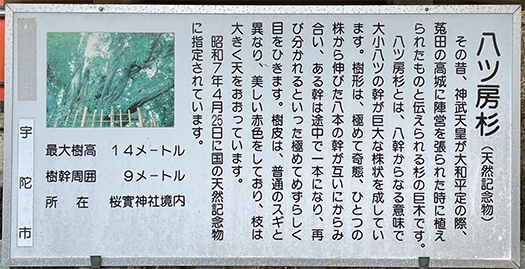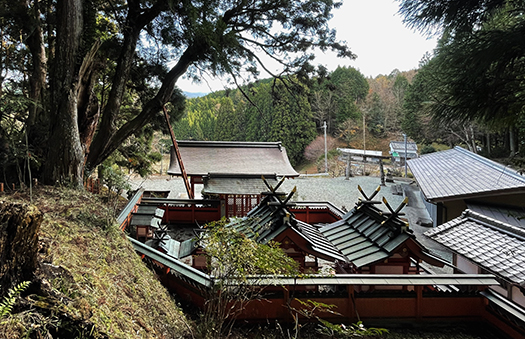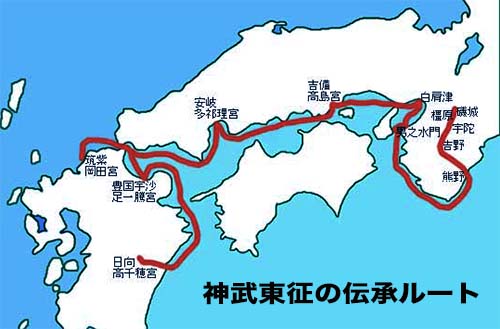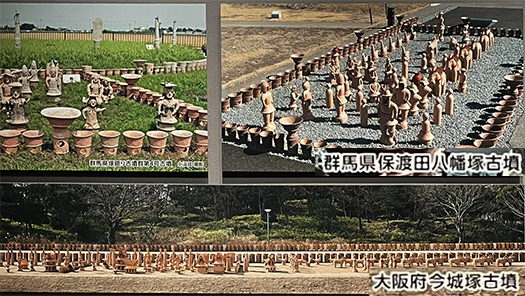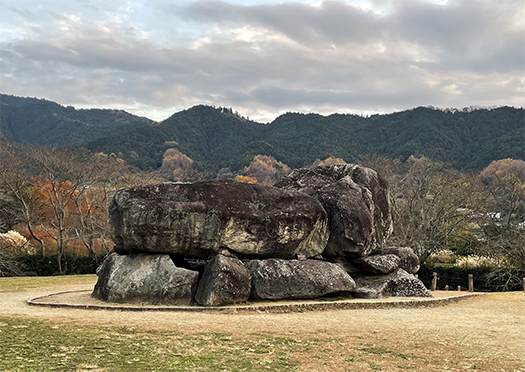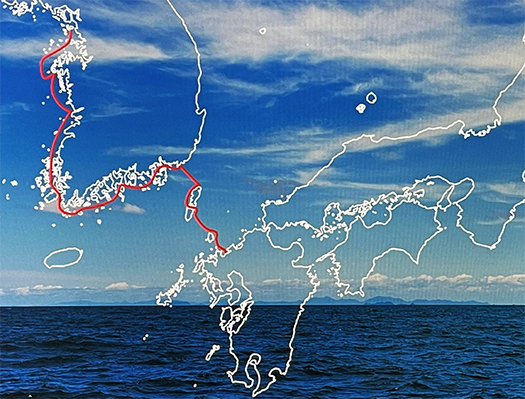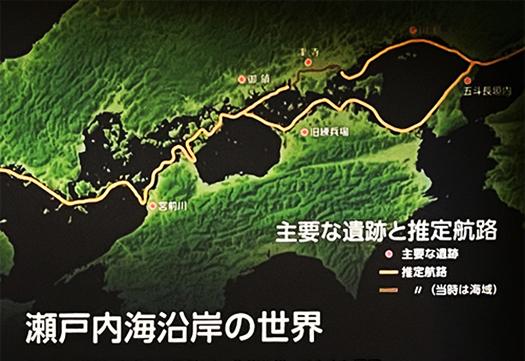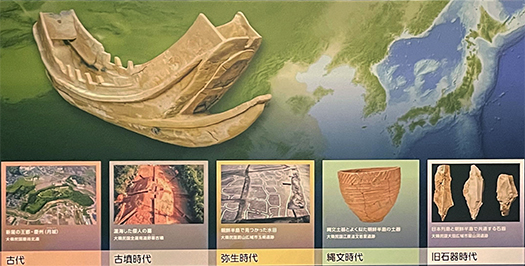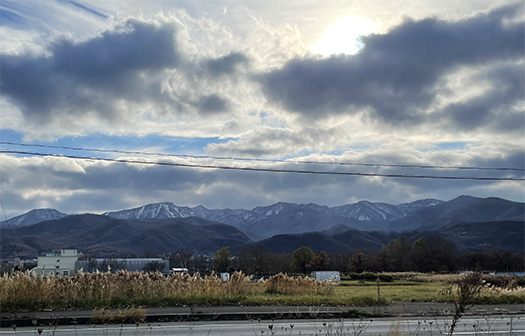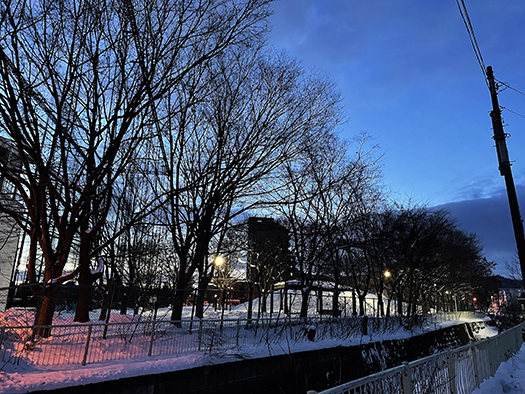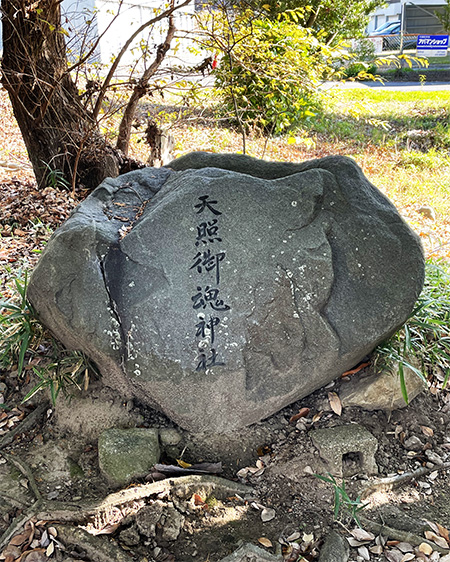

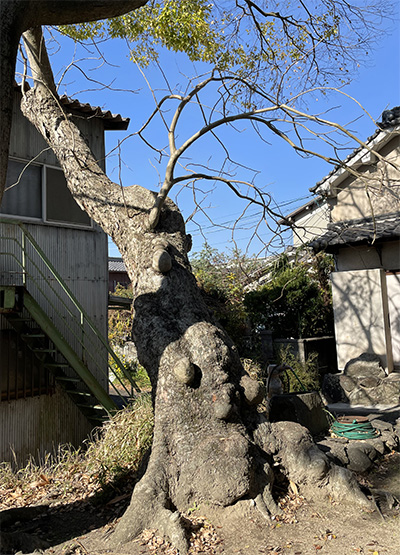
列島37,000年史は国立歴史民俗博物館展示からの刺激で開始しましたが、昨日までの「神武東征」譚で古代史の大きな流れという側面はほぼ終了。そこから考古的な発掘が進んできている纏向遺跡の段階に至って確実な資料的裏付けのある世界に至ってくる。天皇で言うと第10代の崇神天皇がその存在確実性が高いとされてくるのですね。
崇神天皇の御代というのは、250年代頃という推定が強くなっている。遺跡が所在する桜井市ではこうした考古発掘・研究に力を入れて「纏向学」という古代史研究の公的センターまで作っている。
で、崇神帝の御代では大きな祭祀の革新が行われたといわれる。それまでの大王権力の「祭政」についてそれを分離する志向性が高まったとされるのですね。神武以来、軍事・政治の中心権力が同時に祭祀についても執り行うという体制から、国民の半数が疫病に倒れたという事態を受けて、祭祀を仕分けしようと考えたといわれている。その間の経緯として三輪山の大神神社の祭神からのご託宣として専用の祭祀者を定めよ、されば疫病は退散するであろう、というものだったとされる。そして現在の堺周辺にいた「大田田根子」という出雲出自系列の人物を大神神社神主として任命せよという天意を受けた。
〜崇神天皇の時、疫病の流行で人民が多く死に、崇神天皇の夢枕に大物主大神が現れ「意富多々泥古(おおたたねこ)という人に自分を祭らせれば、祟りも収まり、国も平安になるであろう」と神託を述べた。天皇はその人物を捜し出し、意富多々泥古命(大田田根子)に三輪山の神を祭らせ、伊迦賀色許男命(いかがしこをのみこと)に天(あめ)の八十(やそ)びらかを作らせて、天神地祇(あまつかみくにつかみ)を定め祭らせた。」と記紀にあるという。この「政策」はうまくいって疫病は収まったし、その後さらにアマテラスの遷座場所として、伊勢に祭祀の中心も移動していったとされているのです。
この遷座について、「太陽の道」という太陽神信仰が根っこにあるとも言われる。北緯34度32分の軸線に添ってヤマト王権の祭祀が移動したとする説。纏向遺跡の神殿から三輪山の方向は同軸線上にあり、さらにその延長線上に伊勢の斎宮跡が存在するとされているのですね。
写真は纏向遺跡のすぐ近く、ほんの2-300mほどのほぼ同一地点にある「他田坐天照御魂神社」という社。奇怪な形を見せる樹木や石に刻み込まれた「天照」の文字。とくに鳥居もなく、周囲は樹木に覆われている。
〜境内地は弥生時代からの纏向遺跡中枢部で大和王権の発祥地。太陽祭祀遺跡が集中する北緯34度32分の太陽の道の中心地でもあり鎮座地の太田から見ると立春・立冬には太陽が三輪山から昇り、春分・秋分には巻向山から昇る、日読みの地。神社西側の石塚古墳からは太陽祭祀に用いられたと考えられる朱塗の鳥形板や 弧文円板も発掘されている。弧紋円板や鳥形板を高棒に飾り付けて日読みの祭祀を行っていた。鶏は太古から暁に時を告げる鳥として神聖視され、弧紋円板を通して映し出される太陽の影は神秘的。〜
<歴史探究ブログ エナガ先生の講義メモより抜粋>
この年代前後の大和平野の遺跡について、解明が大いに進むことを期待したいと思う。
English version⬇
[Amaterasu, “Nichiyomi” Traces at the Mukomukai Site (The 37,000 Year History of the Archipelago, Vol. 57)
From the traces of the Jimmu expedition to the traces of rituals around 250 at Mimamukai. The excavation of historical facts is proceeding almost as an archaeological excavation. …
The 37,000 Year History of the Archipelago began with the stimulus from the National Museum of Japanese History exhibit, but the “Jimmu Tojo” tale up to yesterday almost ended the aspect of the major flow of ancient history. From there, we come to the stage of the Sumimukai ruins, where archaeological excavations have been progressing, and we come to the world with solid material support. In terms of emperors, the 10th Emperor Sojin is considered to have a high degree of certainty of existence.
It is strongly estimated that Emperor Sojin’s reign was around the 250s. Sakurai City, where the ruins are located, has put much effort into archaeological excavation and research, and has even established an official center for ancient history research called “Sumi Mukai Gaku.
In the reign of Emperor Sojin, a major change in rituals is said to have taken place. So it is said that there was an increased orientation toward separating the “ritual administration” of the great kings’ power from that of the king up to that time. It is said that the idea was to sort out the rituals from the system in which the central military and political power had been simultaneously performing the rituals since the time of the Jinmu, in response to the situation in which half of the nation had fallen ill with a plague. The oracle from the god of the Ogami Shrine on Miwasan was to appoint a special person to perform rituals, and the plague would be dispelled. The god also ordered that a man from the Izumo-Deji lineage named Ota Taneko, who lived in the area around present-day Sakai, be appointed as the chief priest of Ookami Shrine.
〜During the reign of Emperor Takamatsu, an epidemic killed many of the people, and Ohmononushi appeared to him in his dream and said, “If you let a man named Otataneko worship you, the curse will stop and the country will be at peace. The emperor sought out this person and had Otataneko worship the deity of Mt. Miwa, and had Ikagashikono-no-mikoto create the eighty pillars of heaven and establish and worship the heavenly gods, the Ama-no-Mikuni. The Chronicles of Japan says, “He made them build the eighty heavenly shrines and established and worshiped the heavenly gods. This “policy” was successful and the plague was stopped, and it is said that the center of rituals was also moved to Ise as the site of Amaterasu’s relocation.
Regarding this relocation, it is said that the belief in the sun god, “the way of the sun,” has its roots in this relocation. This theory states that the rituals of the Yamato kingdom moved along the axis line of 34°32′ north latitude. So the direction of Mt. Miwa from the temple at the Mimamukai site is on the same axis line, and furthermore, the Saiku site at Ise is said to exist on the extended line.
The photo shows a shrine called “Amateru Amateru Shrine” located at the same point, just 2-300 meters away from the Momamukai Ruins. The word “Amateru” is carved into the oddly shaped trees and stones. There is no particular torii gate, and the surrounding area is covered with trees.
〜The shrine is located at the center of the Mimamukai site from the Yayoi period, the birthplace of the Yamato kingdom. It is also the center of the Path of the Sun at 34°32′ north latitude, where the remains of sun rituals are concentrated, and from Ota, where the shrine is located, the sun rises from Mt. A vermilion-lacquered bird-shaped tablet and an arc-marked circular tablet, which are thought to have been used in sun rituals, have also been excavated from the Ishizuka burial mound on the west side of the shrine. The arc-crested disk and bird-shaped board were decorated on a high pole to perform the sun-reading ritual. The chicken has been considered sacred since ancient times as a bird that tells the time at dawn, and the shadow of the sun reflected through the arc-shaped disk is mysterious. ~ (Japanese only)
<(Excerpt from Dr. Enaga’s lecture notes on the History Inquiry blog)
I hope that the remains of the Yamato Plain around this period will be greatly elucidated.
Posted on 1月 3rd, 2023 by 三木 奎吾
Filed under: 未分類 | No Comments »


